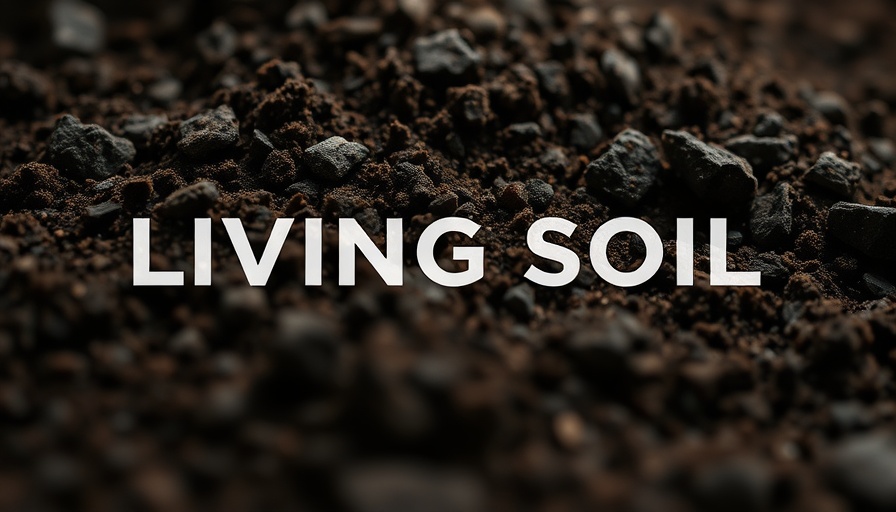
The Benefits of Living Soil for Cannabis Cultivation
For those involved in cannabis cultivation, the sustainability of their growing practices is becoming increasingly important. Using living soil is a revolutionary approach that offers numerous environmental benefits. By fostering a rich ecosystem of microorganisms, organic matter, and natural nutrients, cultivators can reduce reliance on synthetic inputs, promote healthier plants, and ultimately lessen their environmental impact.
Understanding Living Soil
Living soil is a term that refers to a biodiverse growing medium packed with beneficial microbes, worms, and organic materials. Unlike conventional growing methods that often rely on synthetic fertilizers and disposable media, living soil creates a self-sustaining system. This means less waste and a healthier environment for cannabis growth. As cannabis advocates increasingly share insights about these sustainable practices, many growers are beginning to adopt living soil to not only improve yields but also to protect the planet.
How Living Soil Enhances Plant Health
Cannabis cultivated in living soil thrives with less need for pesticides and fungicides, thanks to the natural balance of the ecosystem within the soil. Healthy microorganisms help fend off pests and diseases, allowing plants to develop resistance naturally. This approach leads to stronger, healthier plants that not only benefit the growers financially but also contribute to a less polluted environment.
Reducing Costs and Environmental Impact
While the initial investment in building a living soil ecosystem might seem high, the long-term savings and environmental benefits are significant. For example, Tom Moylan of Culta noted that starting a living soil operation cut down on the need to replace grow media annually, saving both money and labor in the long run. This practice can dramatically decrease the number of trips to landfills, cut water usage, and optimize resource allocation in cannabis production.
The Role of Cover Crops
Innovative techniques like intercropping with cover crops offer additional benefits. Cover crops such as clover help improve soil structure while naturally adding nitrogen back to the soil. This practice not only enhances soil fertility but also assists in moisture retention, making living soil systems more resilient to drought and extreme weather—conditions that cannabis growers are unfortunately facing with increasing frequency due to climate change.
Waste Reduction: A Major Benefit
In addition to cutting costs, using living soil dramatically reduces waste by eliminating the need to flush plants at the end of their flowering cycle. This means less water is wasted on flushing out synthetic nutrients. For businesses like Hava Gardens, these small changes have led to significant cumulative savings, with tens of thousands of pounds of soil avoided from landfills and reduced water management costs.
Practical Insights: Implementing Living Soil
For those considering a shift to living soil, it is important to test the soil regularly. Frequent assessments allow growers to adjust nutrient levels and ensure that their soil maintains optimal health. This approach emphasizes the benefits of sustainable living, not only for the plants but for the broader ecosystem. However, understanding that it requires patience and commitment, growers are encouraged to embrace this method gradually, monitoring results and making adjustments accordingly.
Connecting with Eco-Friendly Practices
For environmentally conscious pet owners, there's an important connection to be made. As more individuals seek out eco-friendly products for their pets, consider exploring brands that utilize living soil in their cultivation practices, especially for items like premium dog treats. By supporting sustainable growers, you play a role in promoting environmental health while ensuring your pet enjoys the benefits of high-quality, nutritious treats.
Final Thoughts: A Sustainable Future
The adoption of living soil practices offers a transformative opportunity for cannabis growers to lessen their environmental footprint significantly. From enhancing plant health to reducing water usage and waste, these innovative techniques pave the way for a sustainable future in cultivation. As consumers, choosing eco-friendly products, including dog treats from brands that prioritize sustainability, reinforces the values we advocate for our planet.
If you're considering making more eco-friendly choices in your everyday life, think about where your pet treats come from. Support brands committed to sustainability, and together, we can foster a healthier planet for our pets and ourselves.
 Add Row
Add Row  Add
Add 




 Add Row
Add Row  Add
Add 

Write A Comment